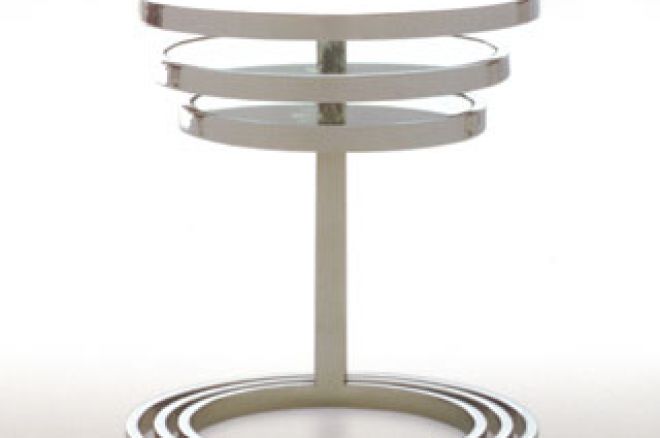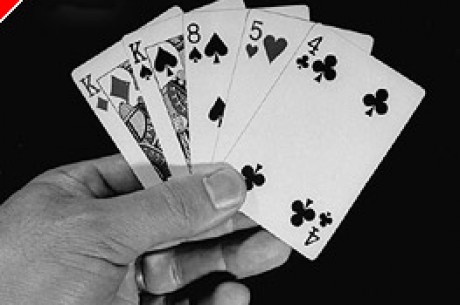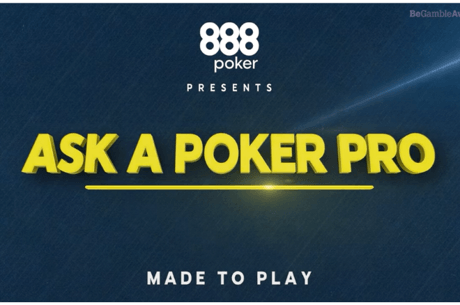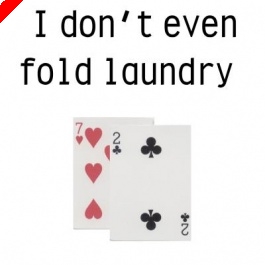No Limit Holdem Full Ring Games Strategy

Most of the cash game poker players nowadays tend to play at 6-max or shorthanded tables. Almost every poker players, however, will have started playing at full ring tables. Full ring means that there are 9 or 10 players at a table.
This article will introduce you to the basics of playing a full ring no limit hold'em cash table. It will discuss the advantages of playing full ring, strategies that should be adopted and where needed, it will compare full ring play with playing at shorthanded tables.
Why Full Ring?
When talking about full ring you always hear people saying a�?It's boring", "ABC Poker", "Little variance" and "Puts me to sleep". Of course it depends on how you play at these tables, but you can generally expect to get more action at a 6-max table than while playing full ring. This is because you don't have to post blinds as often. At a full ring table you will post 1,5BB every 10 hands, while at a shorthanded table you will post 2,5BB in 10 hands. That's an increase of 66%, and will automatically influence the game. At a full ring table players can play fewer hands without this having a direct negative effect on your win-rate or the money you lose through posting blinds.
Other than at a 6-max table, where you will usually have to play a little bit more aggressive, a full ring table gives you the chance to spend more time waiting for a good hand. This is an option that you have, but by no means do you have to play this way.
So why start playing full ring tables? Nowadays almost everybody plays at 6-max tables, especially the good players. That's exactly why you could give a full ring table a try. As most of the good players can be found at 6-max tables, you should find more bad players at the full ring tables. The majority of full ring players on the lower limits can be divided up into two categories. First there's player who play very loose. These types of players don't raise often, but they tend to limp in with a great range of hands. On the other side theres the tight player who's range consists of pocket pairs and AQ+. The players in the second category seem to be the majority by the way.
If full ring cash games are not your 'main game', then there are four situations in which switching over to full ring tables is a possibility, and sometimes even recommended. First of all, if you're just starting with poker, it would definitely be a good idea to start at full ring tables, just to get to know the game. You learn about the strengths and weaknesses of your hands and about the dynamic of the game. The second situation is if you are predominantly a tournament player. Multi-table tournaments are almost always full ring. If you want to make the transition into cash game, then starting at full ring tables is probably a good idea. The third situation in which you should give full ring tables a try is if your 6-max play isn't going too well. A bad run usually results in a player losing confidence in his game, so moving to a full ring table could reduce the variance in your game. The fourth situation is when you play shorthanded and decide to move up to the next limit. To get used to the betting amounts it's a good idea to play around 1000 hands at full ring tables before starting at the aggressive 6-max tables.
Strategy
In this part we will briefly discuss position, hand values, blind stealing and the strategy that goes with it.
Position
The difference between a 6-max and a full ring games is that a full ring games have 3 to 4 seats more at the table. This means that when sitting in early position, you will be out of position more often than at a 6-max table. If you open UTG, there's still 8 or 9 players behind you left to act, compared with 5 or 6 in a shorthanded game. In addition it will be more likely that you will be forced to play a hand against more players out of position. As a result, opening with 'second category' hands such as low pockets, low suited connectors and hands like KQ and AJ seems to be less appealing. How this still can be done will be discussed later in the article.
Preflop game
There's another reason why opening hands in early position at a full ring game can be dangerous. Because there are more players at the table, the chance of a player having a good hand is obviously greater. If you regularly open-raise (or bet) with mediocre hands, as described earlier, and there's a re-raise, you will have to let go of your hand most of the time. You are often going to be out of position and your hand will often be behind against the range of the average player. You should generally give more respect to 3-bets in a full ring game than you do in at a 6-max table.
When, for example, players with statistics like 12% VPIP and 8% PFR (which you will see a lot of at full ring tables and seldom at 6-max tables) start to 3-bet, this will often happen with a limited range of hands. Once again, the chance that at least one player at the table is holding a strong hand is higher at a full ring table than at a 6-max table. On the other hand you should not forget that a full ring game, where the first three or four players fold their hands, is essentially a 6-max game. The only 2 differences are that the remaining players generally play a little bit more passive and that hands have been folded that were 'not good'.
As said before, a player opening UTG in a full ring game often has a very strong hand. If someone decides to 3-bet an average player that opened UTG, then this player will almost always be holding a monster. Experience tells us that a lot of respect should be paid to 3-bets at a full ring table. Of course you can use this to your advantage by using 3-bets to steal some pots preflop, but you should bear in mind that especially the players in early position often play very tight and that a bet/raise from those players often indicates strength.
Hand Ranges
So with which hands can you open? And from which position? I advise against having a standard hand range. It will make you become to predictable, which again will lead to you making less money at the tables. You should generally try and adapt to the dynamic of the table and the players around you.
A general range of hands with which to open raise:
UTG and UTG+1: AQs+, AKo, JJ+
Early MP (3rd and 4th position): AJs+, AQo+, 99+
Late MP (5th and 6th position): AT+, KJs+, 77+
Cut Off: ATo+, A8s+, KTs+, 9Ts+, 22+
Button: A8o+, A2s+, 56s+, 68s+, 22+
This range of hands is still pretty conservative. If your table is 9-handed, as it is on Pokerstars for example, then you can forget about one of the two late middle-positions. Also try to adjust the size of your raises. It is often a good idea to open smaller with a wider range of hands, so raising to 3BB instead of 4BB. This way, if you get raised it will cost you less to fold your hand.
If a couple of players before you have limped, there's a range of hands with which you can overlimp. Hands with implied odds, such as suited connectors, AXs and low pocket pairs work well here. The same can be said for calling raises. Pocket pairs always tend to do pretty well here as they have high implied odds. If a tight player opens in early position and you call with a pocket pair, you can often win a big pot if you hit your set. The extent to which you can call here depends on the dynamic of the table. If you're up against a couple of aggressive players who often raise, you should be careful with calling these implied odds hands in early position. In the long run this can cost you a lot of money because you will often after fold after a 3-bet. Therefore calling raises and overlimping is best done in late position.
If you have a monster and you are in early or middle position and a player before you opened, then a raise is almost a must. You definitely don't want to see a flop against 3 or 4 players while holding AA. At full ring tables there is a lot of multi-way action while at 6-max tables you are often heads-up by the time you reach the flop.
Earning money preflop
In full ring games you can win a lot of money preflop, or at least lose relatively little. Shorthanded games aren't really designed to open-limp. In those games you pick up the pot by raising so often that you would be crazy not to. Although there can be some advantages with open-limping in 6-max games, these advantages are much clearer in full ring games. This is with regard to the first 3 to 5 positions. Here, open-limping is allowed!! Why? When you get raised while holding 22 UTG you would usually have to fold, because your odds of playing this hand profitably are often low. What can you do about that? You limp with 22. If somebody raises, you can call the raise. More often than in 6-max games, you will play multi-way pots in a full ring game, which results in higher implied odds. The expected profit from hitting a set is therefore greater and your losses are limited.
Furthermore, when you open limp and players behind you bet and raise, you can easily fold your hand at the cost of 1BB, while usually this would have cost you 3 to 4 BB. If you open limp and everybody folds to the big blind, you can often pick up the pot with a C-Bet of 2BB. Obviously you need to be careful with this play. You never know if the player on the big blind didn't just hit one pair or even two pair.
You can limp with a wide range of hands here, from low pocket pairs to suited connectors and suited aces. The aim of this play is to get into a pot with a raiser and beat him/them postflop with your implied odds hand. This only works if most of the players at your table have a decent stack in front of them, and with this I mean 100BB or more. If you're sitting at a table with many short stacks then that's it with your implied odds.
You can also open limp your monsters and hope for a player behind you to raise. This will happen regularly. Once it does, you can then re-raise, which will be a sign of great strength. For your opponent to call here he would need to be holding a monster himself. As a result this play is often used as a bluff against a LAG player in a full ring game.
Another way to make money at these tables is to start attacking limpers. The weaker, loose players who often limp to see a flop are a good target for this. In late position you can pick up a lot of pots by raising the limper(s). The best time to do this is when you have a number of limpers in front of you. Be aware to make a large enough raise so you don't end up getting called by four players. The rule of thumb here is 4xBB + 1BB for every limper, up to a maximum of 7BB. Don't forget to watch out for players who regularly use the limp-raise tactic.
If it is folded to you, you will also be able to pick up the blinds relatively often. Players at full ring tables are generally a little tighter. Therefore you can often pick up the blinds in late position without running into much opposition.
On the flop and beyond
The worth of a hand is less in a full ring game than it is in a 6-max game. There are more players at the table, which will lead to players getting good preflop hands more often. Pots often end up being mutliway after the flop. The players in these pots are usually holding good hands that improve on the flop, therefore the value of your hand decreases. On average, you're in a pot with more opponents holding better hands.
Hands that you win pots with in a shorthanded game, like a-high or a second pair, are often not good enough to win a pot in a full ring game. In other words, the average showdown value of your hand in a full ring game is less than the value in a 6-max game
When you happen to be the preflop raiser and get caller, there is often the question whether or not to C-Bet the flop. Basically the same rules apply here as with the value of your hand. More opponents, who hit more often, which can lead to your C-Bet being less profitable. This obviously varies between tables and opponents, but in general you will be up against better hands at a full ring table than in a 6-max game. This will lead to your C-Bet percentage being lower than at a shorthanded table.
Conclusion
Playing a full ring game will generally lead to a lower variance in your game than you would have in a 6-max game. It can be a pleasant change of scenery if it isn't going too well, but be aware to make the necessary adjustments to your game before becoming a full time full ring player.
Good Luck







